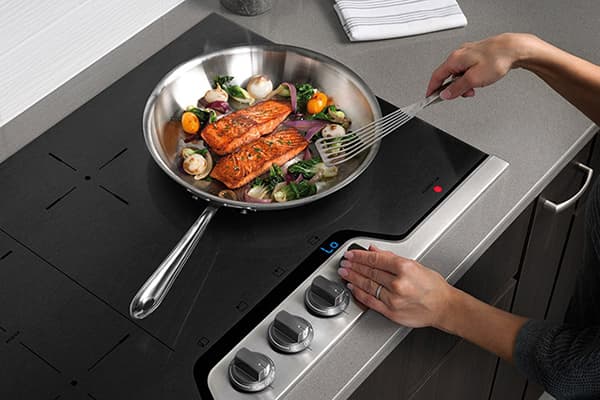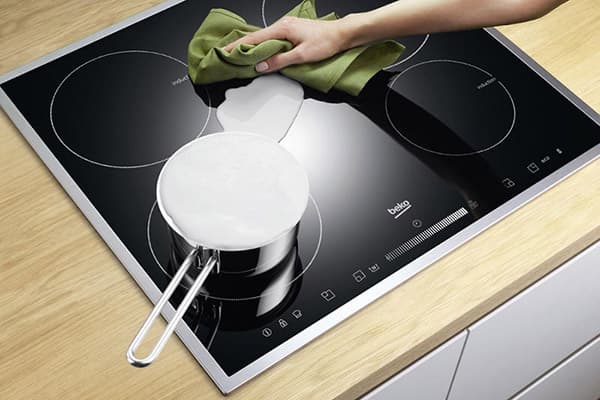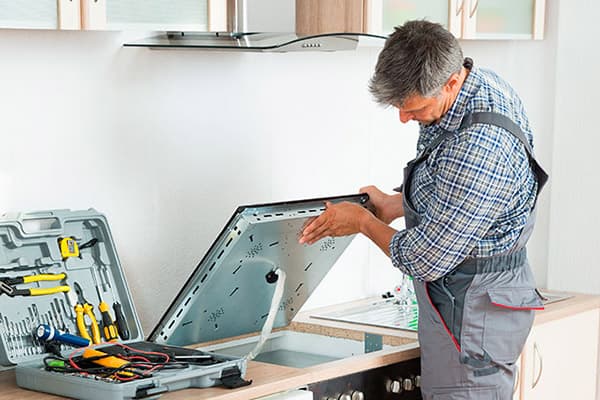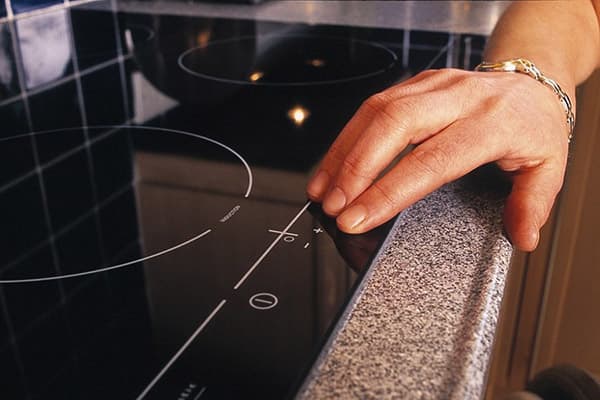Which stove (hob) is better - electric or induction?
Content:
The time has gone by when a whole box-stove was chosen for cooking in the kitchen, and the assortment of models was represented by 5-6 species. Today, the upper part can be purchased separately, it remains only to decide which is better - an induction or electric hob. The choice for many is not simple, but in terms of functionality is obvious. Induction models are progressive representatives of the electric series. When using them, energy is economically consumed, only dishes are heated (the hob remains cold), and the power is comparable to a gas stove. True, they cost many times more.
Advantages and disadvantages of electrical models
In general, induction models are also electric, only advanced. Panels with cast-iron “pancakes” also belong to the electric row. But we will consider glass-ceramic models - by far the best-selling and most popular. Depending on the method of heating, they are divided into rapid, halogen and HiLight with a tape heating element.
Obvious advantages of a plate with a glass-ceramic surface:
- a large assortment of colors, diverse design, choice of location and size of burners;
- smooth and fairly fast heating process (especially with halogen and HiLight panels);
- easy leaving and lack of lattices;
- wide price range - there are both budget and expensive options.
The disadvantages of glass-ceramic electric panels include the following:
- such characteristics as a flat surface and the absence of deflection, lead to the fact that when the food is accidentally transfused, the entire surface becomes inoperative and requires immediate cleaning;
- risk of breakage (the need to replace lamps on halogen panels, burnout of the tape heater).
If the time for heating the stove is not critical, it is better to limit yourself to a hob with conventional rapid spirals. The difference between classic glass ceramics and HiLight with halogen is 5-10 seconds. But at the same time, spiral models burn out less often, and replacing heating elements is cheaper.
The difference between an induction hob and an electric
Induction hobs are a relatively new offer on the kitchen appliances market. The role of the heater here is played by an induction coil, under which an electric stream flows with a frequency of 20-60 kilohertz. It creates an electromagnetic field that excites atoms in the crystal lattice of the dishes and thereby heats it.
From these features of heating follows a lot of advantages:
- induction hob has a high coefficient of performance (COP) - 90% versus 30% for an electric stove;
- it consumes energy more economically - about 4 times (in 15 minutes of operation of the burner of classic electric stoves, 1.93 kW / h is consumed, and induction - 0.5 kW / h).
- the stove remains cold, which increases its safety during operation and eliminates burns;
- fast heating and high cooking speed - 1.5 liters of water boils after 3 minutes;
- it is possible to reduce the heating to a minimum (a fire on a gas stove would be extinguished), which allows you to replace cooking in a water bath;
- the stove will not turn on if there are no dishes on it or the dishes are empty;
- when food gets on the surface of the stove, they will not burn, since it is always cold;
- maximum control over cooking - up to 14 levels of power adjustment.
The main difference between an induction hob is an economical energy consumption and a quick cooking process. You need to get used to the latter. You will no longer be able to chop the cabbage while the meat is cooked on the borsch. All preparations for dishes will have to be done in advance.
As with any equipment, induction hobs have disadvantages:
- work only with special dishes that have the property of being magnetized (old pots may work, but not all);
- difficulties in connecting - it is connected not to an ordinary household outlet, but to a power outlet rated for a current of more than 16 A, requires a three-phase connection, etc .;
- expensive (average cost is 30 thousand rubles for a 4-burner built-in panel);
- repaired too expensive.
Interesting fact
If you put a banknote under a pot boiling on the induction surface, it will not burn, but simply become flat, as if it were ironed.
What else to look for when choosing?
Deciding on the type of heating of the electric stove is not enough. It is also important to consider the set of functions that the hobs are equipped with. The more additional features, the higher the price of equipment. But not all of them are equally useful and necessary.
- Control buttons. They are mechanical and sensory. In the presence of the second, the hob is easier to wash.
- Dish timer By setting the time, you can protect yourself from burning food.
- Standby Timer (“Stop + Go”). Allows you to temporarily stop heating. For example, in order to have time to cut some ingredient or to move somewhere.
- Blocking the plate from turning on. Needed to protect young children who like to explore everything.
- Recipe memory. The technique “remembers” how much time and at what temperature this or that dish was prepared. It is convenient if you often have to cook the same thing.
- Bridge. The mode allows you to combine two adjacent burners for heating large-volume dishes.
- Residual heat indicator. It turns on when the burner is heated enough for cooking, and turns off when cooled to a temperature safe for humans. Allows you to determine which burner is still warm so that you can use it without turning on the hob.
- Hob2Hood. Using infrared communication, it “synchronizes” the stove with a special exhaust hood and, depending on the intensity of the cooking process, controls the fan speed.
- PowerBoost Enhances heating on induction hobs, temporarily increasing the burner power to maximum.
There are combined types of hobs that can combine classic electric hobs, induction and even gas. The quantity and combination can be selected any.
Which is better - the results
If we compare the classic electric hob with induction, then the latter undoubtedly wins in terms of functional characteristics. But if you look from the point of view of practicality and price, everything is not as clear as we would like. On the one hand, the induction type is more expensive, and if it breaks down, its repair will cost half the cost of new equipment. On the other hand, it allows you to significantly save on electricity charges.
The purchase of such a serious kitchen equipment does not happen in one day. To make the right choice, you should carefully weigh all the pros and cons of a particular model. A consultant in the store can tell about them in detail. And then you need to build on your needs and material capabilities.



